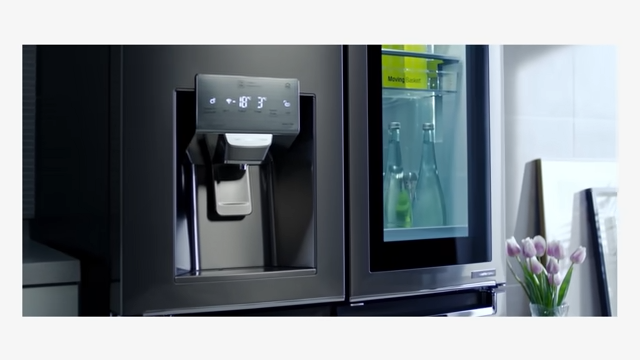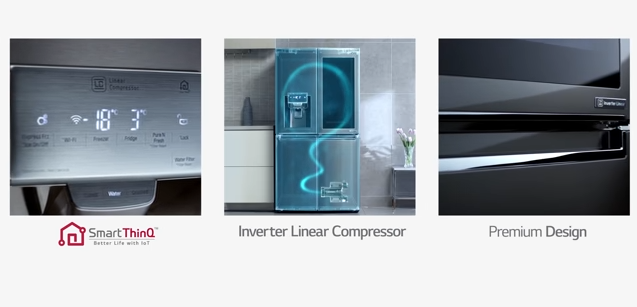Do you know how much electricity a refrigerator uses? This is a question often asked by those looking to purchase new appliances or for homeowners who want to know how much electricity they are costing themselves.. In this blog post, we will discuss the average power usage for refrigerators and provide some tips on lowering your refrigerator’s wattage. Read on to learn more!
What Does The Wattage Of Refrigerator Mean?
The wattage of a refrigerator refers to the amount of power it uses which, in turn, defines the refrigerator ability to do work. It is also the rate at which energy is used.This is measured in watts and should be displayed on both new and used refrigerators. The higher the number, the more powerful your refrigerator will be – meaning it can produce colder temperatures faster and for longer periods than lower-wattage units. Assuming an appliance runs on 500 Watts, this means that it uses 500 joules of energy per second.

How to Calculate the Wattage for Refrigerator?
To find refrigerator wattage, multiply the voltage by amperes. For example: If you have a refrigerator that runs on 115 volts and 7 amps then its power requirement is about 115×7=805 watts. This will vary slightly depending upon how much load there is in your home during certain times of the day or night. Conventional refrigerators typically have a starting wattage of 800-1200 watt-hours/day, and a running wattage of around 150-watt hours/day.
How to turn the Wattage into The Kilowatt Hours?
To determine how much your fridge contributes to your monthly electricity bill, divide the cost of each kilowatt hours (kWh) consumed by the appliance. Calculate the cost of each kWh that your refrigerator consumes to calculate how much it contributes to your monthly electricity bill. Since refrigerators are constantly on and off Throughout the day, the U.S. Department of Energy assumes eight hours of operating time per day. Multiplying your refrigerator’s demand of 805 watts by 8 hours one gets 6,440 watts per day. After Dividing that amount by 1,000 one gets 6.44 kWhs, multiplying it by the average electicity price in US charged from 12 cents to 15 cents per kWh, you assume your fridge daily cost between 77 and 80 cents or $23.10 – 25$ per month.
Home Refrigerators Wattage
Average Home Refrigerators Wattage
Refrigerators are in fact reactive appliances with an electric motor that require extra energy to start, but subsequently use significantly less watts while running. They also have internal fans that run intermittently, and a defrost cycle that requires power. These and other factors define the starting and running wattage of refrigerators.

Older larger units required up to 700-1000 running watts and 2000-3000 watts when starting. Newer models typically use between 200 and 500 watts per hour while older ones may only need 160 or 170 watts an hour.
Modern refrigerator/freezer typically require:
– large home refrigerator: 200-400 running watts, 1000-1200 starting watts,
– average home refrigerator: 100-250 running watts, 700-1000 starting watts,
– small home refrigerator: 75-150 running watts, 400-600 starting watts,
– compact home/RV refrigerators: 40-50 running watts, 80-120 starting watts.

Energy Star-certified refrigerators
Energy Star certified refrigerators use less power than other models, especially those manufactured before 1996. Look for the Energy Star label when purchasing a new refrigerator to save money on your energy bill. Certified refrigerators are more efficient in the way they defrost and maintain even temperatures throughout their interiors. Such refrigerator can use up to 20% less energy according to its Energy Star level.
If you have a large home refrigerator/freezer that requires 500+ watts, check its energy star rating – buying a new, energy more efficient unit may lead to great energy (and money) saving over a certain period of time.
Other Factors that Affect Fridge Power and Wattage
- Type. There are two different types of refrigerators: conventional refrigerator and frost free refrigerator. A conventional refrigerator has a self defrosting mechanism that turns on the compressor periodically to release heat from the unit. A frost free model does not have this feature and periodically turns on the compressor to release heat from the unit. These types of refrigerator use less energy than conventional ones since they have no defrost cycle and do not require electricity for several hours each day when their defrosts cycles runs. However frost free units still consume some power.
- Size. Anything with a larger volume, such as side by side fridges, use more electricity.
- Location. If the refrigerator is in an unheated area or has no ventilation, it will require more electricity.
- Season. In the summer, refrigerators consume more energy than in the winter since the ambient temperature is higher.
- Usage. If the fridge door is frequently opened or kept open, the compressor will have to work harder to keep things cool. Also, an empty refrigerator may need to work harder than a reasonably-stocked one.
- Age. Old modelss are less energy efficient in general than modern high-star rated refrigerators. We say ‘certain period of time’ since this period depends on local electric energy prices, power difference between units, etc.
Commercial refrigerators
Commercial refrigerators are critical for grocery stores, restaurants, and other businesses in the food industry. Whichever is your reason for shopping commercial fridges, they require more power usage than residential models due to their more powerful compressors, heavier insulation and constant use. In fact, the average commercial fridge uses about 24% more energy than a household model of similar capacity.
Commercial refrigerators are intended to be used for extended periods of time on a daily basis, with three shifts each day being typical. Commercial fridges are also built with more insulation and thicker steel to keep temperatures consistent over lengthy periods.
Here are the main types of commercial refrigerators:
- Cabinet refrigerators
- Under-counter refrigerators
- Worktop (preparation station)
- Chest freezers:
- Upright cabinet freezers
- Under-counter freezers

Using the average electricity cost, the square footage and cooling system voltage of various commercial freezers can help you generate some approximate cost numbers. According to the with the 12-month average average of $0.1071 kilowatt hour cost, coolers estimating are figured as follows:
- 6-by-6 coolers to 8-by-8 coolers use about $184 of electricity per month
- 8-by-10 coolers to 10-by-10 coolers use approximately $288 of electricity per month
- A 10-by-12 coolers uses about $151 of electricity every month
Choose the Best Refrigerator Wattage!
In this blog, we’ve attempted to answer the question of what does refrigerator wattage mean. We hope that you have found our answers on different types refrigerators helpful and informative. The main issue of the wattage of your refrigerator, nevertheless is it for home usage or commercial one, is an idea of how much power it draws. With the average American home using 30 kWh of electricity per month, that can add up to about $50 in savings annually! So if you looking for a way to cut down on your electricity bill, one great option is to invest in an energy-efficient fridge. If you need any help with your fridge or other appliance, don’t hesitate to reach out!
Contents
